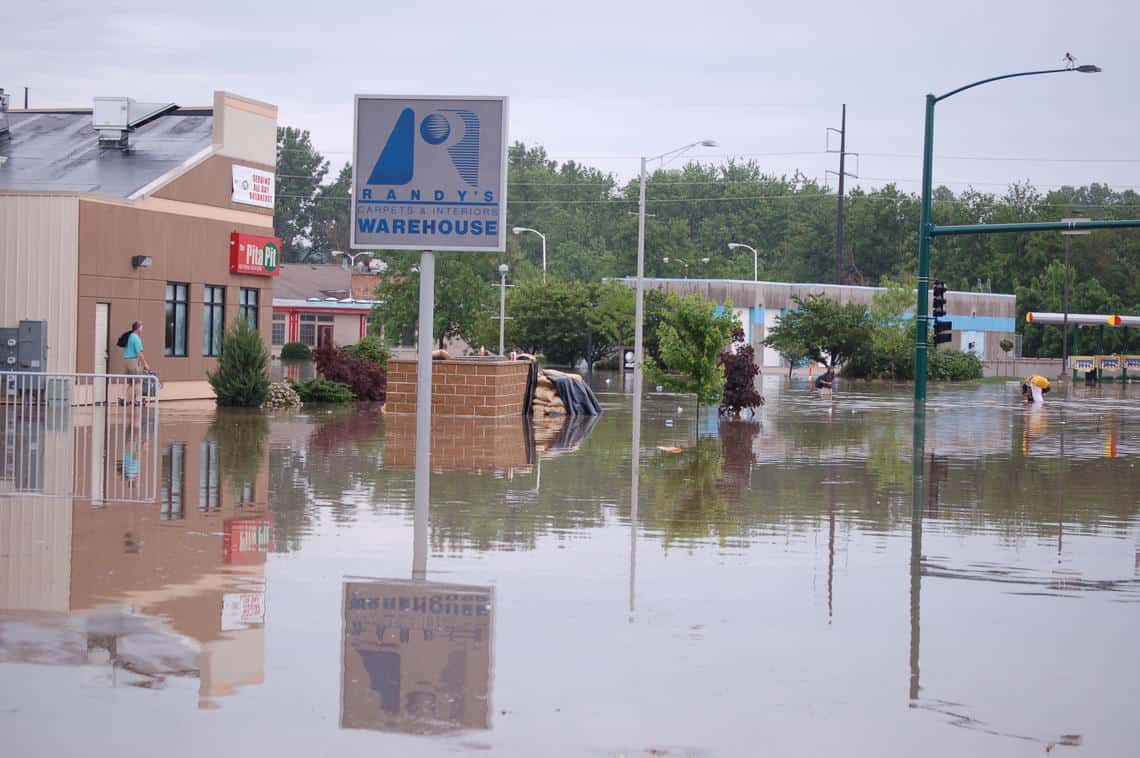The word ‘flood’ doesn’t often carry with it positive connotations. Floods invoke images of rising waters, incessant rainfall, and weather events that can cause destruction.
Flooding is impacting many areas of the world as climate change causes sea level to rise, but floods can also occur in inland areas.
While flooding can harm manmade infrastructure and disrupt certain environments, wetlands are an area that benefits from flooding events. Wetlands are highly susceptible to climate change, especially the increase in temperature that is expected over the course of the next 80 years.
Higher temperatures, even if they are coupled with higher precipitation levels, increases evapotranspiration and ultimately cause wetland environments to dry out.

Targeted Flooding and Wetland Resilience
Targeted flooding may be one tool that conservationists and wetland restoration specialists have to make wetland areas more resilient in the face of climate change. The wet conditions that characterize wetlands also make them an ideal zone for storing carbon due to the slow rate of plant and animal decomposition that occurs in these areas, effectively keeping this carbon out of the atmosphere.
Wetlands Store Carbon
As the Earth warms, these areas release the carbon that has been sequestered, becoming part of the feedback loop that amplifies the effects of climate change.

Wetlands that exist in the floodplains of rivers naturally experience permanent or seasonal flooding events. As humans have developed these areas, wetlands have been drained, rivers have been rerouted, and the natural cycle of floodplains has been suppressed.
This restructuring of natural water cycles leads to wetlands drying out as well as a change in sediment distribution; rather than soil and other debris being deposited in wetland areas as the river flows, these sediments are instead carried downriver to its end. These downriver deposits can actually block the flow of water, causing more flooding events over time.
Protecting Biodiversity in Wetlands
There are many plants and animals that thrive in wetland areas, and still many others whose migrations, reproduction, and survival depend on the health of wetlands.
Biodiversity in wetlands is incredibly high, with an estimated 40% of the world’s species living in wetlands. Countless others transit through at different times of the year, taking advantage of a protected, water-rich environment.

This dependence makes the fragility of wetlands that much more pressing.
Fortunately, work in the Lake District in the United Kingdom is proving that wetland restoration, unlike some other climate-driven actions, doesn’t have to be expensive or particularly disruptive to existing infrastructure in order to be effective.
Lake District Conservation
Efforts are ongoing to reestablish the natural flow regimes of rivers by blocking some engineered river channels and taking away manmade drains in order to allow water to reinvigorate dormant wetland areas in the Lake District. These small actions allow rivers to flow back into their previous channels and store sediment in these boggy wetlands, rather than carry it downstream.
These actions are also combined with riverbed restoration efforts including digging out ponds, creating rapids and other water features that build resilience back into these environments. Once restored, these wetlands become integral carbon storage spaces as well as preventing major flooding from occurring downstream.
One study estimated that restoring 15% of the world’s dormant wetland areas could result in the storage of 30% of the total increase in atmospheric carbon dioxide that has been released since the Industrial Revolution. This could help prevent 60% of the extinctions that are expected to occur for the 25% of wetland plants and animals that are at risk of extinction from wetland degradation.
Restoring wetlands requires a fundamental shift in how people view the function of these essential habitats. Rather than seeing them as an obstacle to human infrastructure and something to be drained and conquered, we need to reframe our view to see them for what they are: a home for plants and animals that will be gone without them; a place for precious fresh water to restore the soil; a buffer against flooding events; and another place to store the massive amounts of carbon that we’ve released into the air.
Reference
Entwistle, Neil, Heritage, George. Flooding can help resurrect wetlands and slow climate change- here’s how. The Conversation. 25 November 2020. Retrieved from https://theconversation.com/flooding-can-help-resurrect-wetlands-and-slow-climate-change-heres-how-148939
